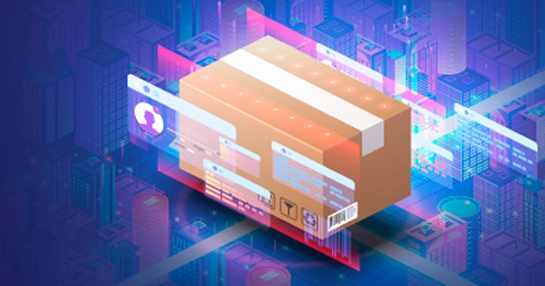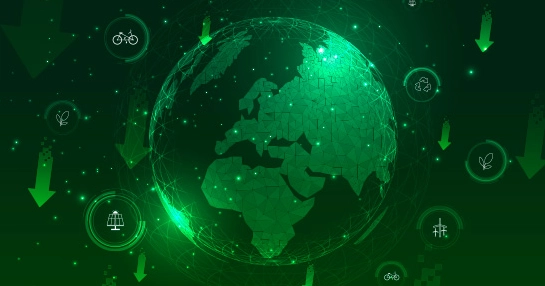Procurement has been an integral part of businesses globally ever since the start of the cycle of commerce. Every business has been involved in procurement activities to produce the goods or to fulfill day-to-day requirements. The role of procurement has increased from just being a purchase function to optimizing the available resources to improve the efficiency and profitability of businesses.
Although it has changed from its traditional avatar, what does procurement mean for a business today?
Here is all you need to know about procurement and its role in modern business:
What is Procurement?
It is important to understand the meaning of procurement before we get to understand how the current procurement management works. The act of obtaining goods or services, usually to fulfill the requirements of a business, is called procurement. In most cases, procurement is associated with companies as the purchase of goods or services is often large scale.
However, the role of the procurement department has evolved to handle end-to-end process that can include activities such as sourcing, identification of suppliers, negotiation, purchase, receiving, inspecting goods and record keeping.
Globally, businesses embrace cutting-edge procurement processes and solutions as a necessity, not a luxury. These technologies can achieve substantial cost reductions, exponential product development speed, and quality assurance.
To remain competitive, today's enterprises must ensure due diligence of suppliers across various regions in the world before signing any long-term contracts. Enterprises must improve their performance across the entire supply chain process, including procurement. Procurement is the key differentiator in global businesses, and it demands multiple resources from a business.
Across the globe, no enterprise is so self-reliable that they have internal access to all the materials. Consequently, they rely on other businesses when they have to acquire goods and services that are crucial to their operations. As a result, procurement is not only about buying goods or services daily to run operations but also to ensure long-term value addition.
Companies need to give adequate importance to their procurement strategy and outcomes.
Enterprises must have a robust procurement and supply chain management strategy for added business benefits, success, and continuity. The procurement process can be considered a strategic function for identifying, planning, and acquiring the organization's current and future requirements.
What is Procurement Management?
Procurement management is the process of identifying, appointing, and managing reliable and competitive suppliers for the day-to-day requirements of business operations. It can include a wide variety of requirements such as office supplies, furniture, raw material, marketing services, for a business to run effortlessly.
The process includes procurement planning and execution so that the business can get the right material at the right price and at the right time. Therefore, the procurement department is always on the lookout for reliable suppliers that can meet the increasing procurement demands of the enterprise.
What is the Procurement Process?
The procurement process includes several stages aimed at meeting the requirements of the organization for its smooth functioning. A procurement management software or an overall supply chain software can help you handle the procurement process with ease.
The procurement process can be divided into the following stages:
Stage 1: Procurement planning
The step requires understanding the requirements of the business and creating requisitions. It is mostly used to lay a strong foundation for the procurement process of an organization.
Stage 2: Develop A Procurement Strategy
An enterprise needs to have a robust procurement strategy in place to handle all the business requirements. The strategy can either be devised in-house or with assistance from procurement consultants.
Stage 3: Identify Potential Suppliers
The procurement department focuses on identifying potential suppliers during this stage. Depending on the requirements, it can be a mix of old and new suppliers.
Stage 4: Negotiating for the Best Price
Depending on the procurement strategy, the procurement function either negotiates for the best price with a single vendor or a group of vendors.
Stage 5: Purchasing Goods or Services
After vendors have been identified and the best price has been agreed upon, it is time to purchase the goods or services as required by the business.
Stage 6: Record-Keeping
The procurement process also requires vendors to maintain proper records of the procurement done for the business.
Stage 7: Payment and Vendor Management
The process ends with making payments to the suppliers for the goods or services procured. In addition, the procurement department is also expected to handle the vendors on a continual basis to keep meeting business requirements.
Types of Procurement
Various procurement types can help a business meet its requirements. Some popular procurement types are as follows:
- Direct procurement
- Indirect procurement
- Goods procurement
- Services procurement
These can be explained as follows:
| Direct procurement | Indirect procurement | Goods procurement | Services procurement | |
| What? | Any procurement that helps in producing an end product | Any procurement that is essential for day-to-day business operations but does not contribute directly to the bottom line of the organization | Any procurement that includes the procurement of physical items for business requirements. This can include both direct and indirect procurement | Any procurement that includes procuring people-based services for meeting business requirements. It can be both direct and indirect procurement |
| Examples | Raw materials, items purchased for resale, machinery, components | Marketing services, office supplies, utilities | Wholesale items, raw materials, office supplies | Marketing services, security services, law firm services |
What is Procurement in Supply Chain?
Procurement is an integral part of the supply chain function. Supply chain management is a broader concept that not only includes sourcing the products from the suppliers, but also entails optimal distribution among consumers. In other words, procurement can be considered as a subset of the supply chain function, especially in the case of direct procurement.
What is Procurement Technology?
Procurement management has evolved from its early days and is no longer done via a mountain of paperwork and weak analysis. Procurement technology includes using sophisticated software that can help with end-to-end procurement. The various stages of the procurement processes can be handled by the software to make efficient and cost-effective decisions for the business. As these solutions are specifically designed to reduce costs and improve efficiency in business processes, procurement technology helps in improving the overall competitiveness of a business.
How is Procurement Technology used in Supply Chain Management?
Procurement technology has been playing an increasingly important role in the supply chain management of several global organizations. As businesses cope with uncertain times riddled with crisis management and a tense geopolitical situation, effective procurement technology helps a business make the right decisions. Procurement technology can be broadly divided into two categories – procure-to-pay and source-to-contract. Procurement technology helps extend procurement-as-a-platform, provides native mobility, enables built-in social collaboration, and provides intuitive intelligence to the supply chain management framework of a business.
Procurement technology helps automate the regular procurement processes and brings innovation to the overall supply chain management of an enterprise.
Conclusion
Procurement begins with analyzing spend, identifying savings opportunities and negotiating contracts, and it extends up to managing vendor performances and settling final payments with numerous other processes in the middle. Procurement function’s end goal is to develop and implement strategies that are targeted at maximizing value of every buck spend.
That said, the procurement function has undergone a paradigm shift over the past few decades. Starting from paper scrolls to spreadsheets to ERP systems to procurement software, the procurement function has evolved from being limited to purchase activities to being the driving force of businesses.
Procurement dashboards, powered by technologies such as machine learning and artificial intelligence, can help provide better insights into the procurement function of any business and are customizable based on the needs of the business. Procurement technology solutions are often part of the overall supply chain management software and can integrate with the existing ERP systems for better business results.
Businesses can continue to create value by either increasing profitability or reducing costs. An efficient procurement management strategy can prove instrumental in improving the profitability of a business and increasing competitiveness.











